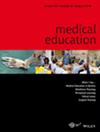Using Hofstede's framework to explore surgical cultures and their impact on female surgeons
Abstract
Context
Workplace diversity improves outcomes, yet surgical cultures have long been identified as a deterrent for women considering surgical careers due to male-dominated traditions. Our study explores the impact of surgical cultures and their influence on gender through the analytical lens of Hofstede's cultural dimensions framework. We apply this in a novel way to gain deeper insights into how masculinity and other cultural dimensions intersect.
Methods
For this qualitative study—part of a larger study exploring gender in surgery—we conducted semi-structured interviews with 29 female surgeons, 18 male and female colleagues of female surgeons (surgeons, anaesthetists, nurses and physician associates) and 13 patients of female surgeons. We analysed the data using framework analysis, with surgical cultures being identified as a central theme. We drew on Hofstede's cultural dimensions theory to deeply interrogate how cultural dimensions intersect to shape the surgical environment, thereby disadvantaging women.
Results
Competition, achievement and heroism associated with masculinity were thought to be pervasive and hindered progression, particularly for female surgeons. Unequal power distributions were reported to lead to female surgeons working harder to earn respect. Female overseas doctors narrated the challenges of being respected by male colleagues from their own collectivist countries. Long-standing ‘old boys’ club’ traditions associated with uncertainty avoidance were thought to maintain the gendered status quo. Long-term orientation and restraint were reported to impact female surgeons with career breaks. However, our analysis indicated novel interplays between masculinity and the other five cultural dimensions, with some dimensions overlapping (e.g., long-term orientation and restraint) and others contradicting (e.g., power distance and collectivist values).
Conclusion
This study, drawing on Hofstede's cultural dimensions, illustrates the complexity of interacting cultural dimensions, serving to maintain inequities for female surgeons. We therefore provide recommendations for multiple interventions to enable surgical culture change, based on these intersecting six cultural dimensions.





 求助内容:
求助内容: 应助结果提醒方式:
应助结果提醒方式:


